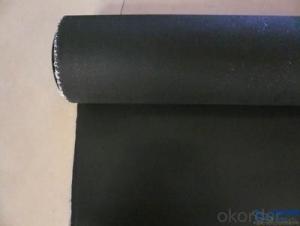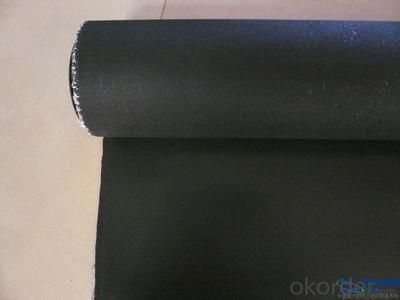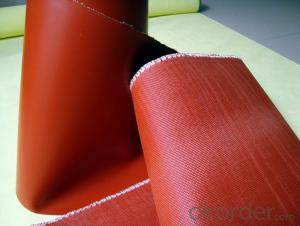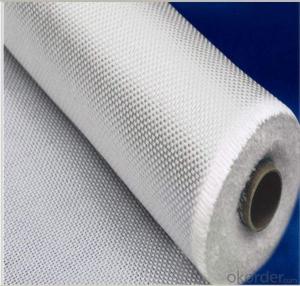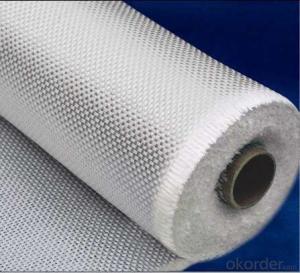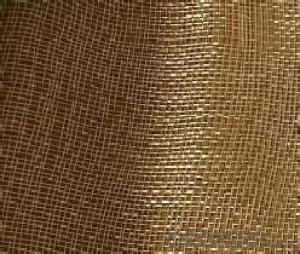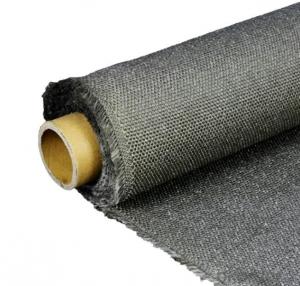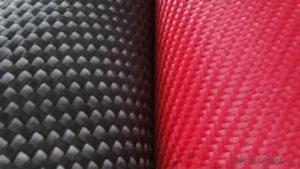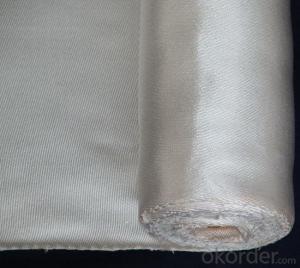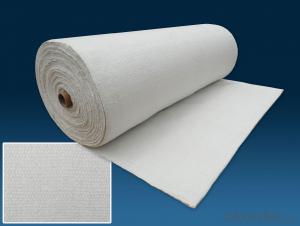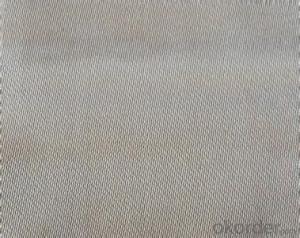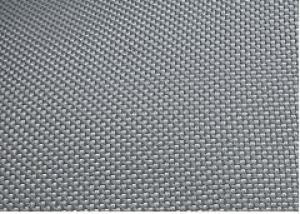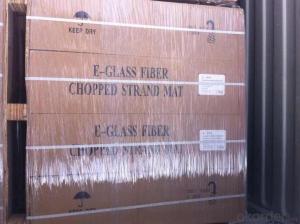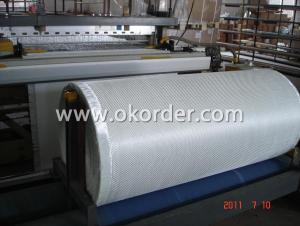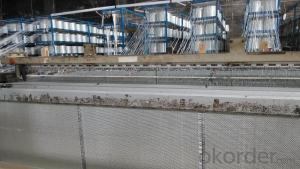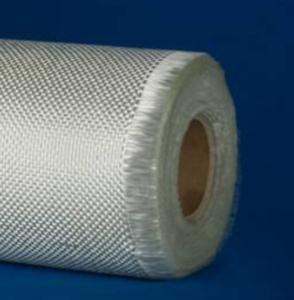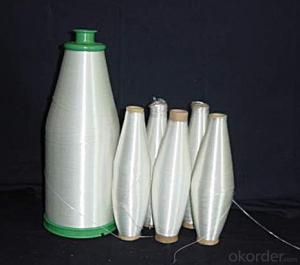Ptfe Coated e-Glass Fiber High Silica Cloth Sheet
- Loading Port:
- China Main Port
- Payment Terms:
- TT OR LC
- Min Order Qty:
- -
- Supply Capability:
- -
OKorder Service Pledge
Quality Product, Order Online Tracking, Timely Delivery
OKorder Financial Service
Credit Rating, Credit Services, Credit Purchasing
You Might Also Like
Quick Details
| Place of Origin: | Model Number: | Weight: | |||
| Width: | Length: | Thickness: | |||
| Density: | Use: | Style: | |||
| Feature: | Supply Type: | Yarn Count: | |||
| Material: |
Packaging & Delivery
| Packaging Detail: | we packed 100m as one roll, one roll packed with box |
| Delivery Detail: | 3 days after get the deposit |
Specifications
high silica fiber
1,300-1200g/m2
2,plain & Twill Woven
3,E-Glass
4,1000-2000mm
- Q: What are the different weights available for fiberglass fabric?
- Fiberglass fabric is available in various weights, typically measured in ounces per square yard (oz/yd²) or grams per square meter (g/m²). The weight of fiberglass fabric refers to the density or thickness of the fabric, which can vary depending on the intended application and desired strength. Some common weight options for fiberglass fabric include: - 3 oz/yd² (102 g/m²): This is a lightweight option suitable for applications where flexibility and ease of use are important, such as in lightweight composite parts, surfboards, or small craft repairs. - 5 oz/yd² (170 g/m²): This is a medium weight fabric that offers a balance between flexibility and strength. It is often used in boat building, automotive parts, and general fiberglass repairs. - 8 oz/yd² (272 g/m²): This is a heavier weight fabric that provides increased strength and durability. It is commonly used in applications that require higher impact resistance, such as in the construction of industrial tanks, pipes, or structural reinforcements. - 10 oz/yd² (340 g/m²) and above: These are heavyweight options that offer maximum strength and rigidity. They are typically utilized in demanding applications such as aerospace, wind energy, or heavy-duty industrial equipment. It is important to consider the specific requirements of your project when choosing the weight of fiberglass fabric. Factors such as the level of strength needed, flexibility desired, and the type of resin or adhesive being used should be taken into account to ensure the fabric meets the necessary specifications.
- Q: How does fiberglass fabric compare to other insulation materials?
- Fiberglass fabric, when compared to other insulation materials, offers several advantages and disadvantages. One of the key advantages of fiberglass fabric is its superior thermal insulation properties. It has a low thermal conductivity, which means it effectively prevents heat transfer. This property makes it an excellent choice for both residential and commercial insulation needs, as it helps to retain heat during colder months and keeps spaces cool during hotter periods. Additionally, fiberglass fabric is known for its durability and longevity. It is resistant to moisture, fire, and chemicals, making it a reliable choice for insulation purposes. It does not degrade easily over time, ensuring that it maintains its effectiveness and insulation properties for many years. Another advantage of fiberglass fabric is its versatility and ease of installation. It is available in various forms, including rolls, batts, and loose-fill, making it suitable for different applications. It can be easily cut and shaped to fit any space, allowing for a seamless installation process. Moreover, it does not require any specialized tools or equipment for installation, making it a cost-effective option. However, fiberglass fabric does have a few drawbacks that should be considered. One of the main concerns is the potential health risks associated with handling fiberglass. The tiny glass fibers can become airborne during installation or if the fabric is damaged, which can lead to skin irritation, eye, and respiratory issues. Therefore, proper protective gear, such as gloves and masks, should be worn when working with fiberglass fabric. Furthermore, fiberglass fabric has a relatively lower sound insulation capability compared to some other materials. While it can provide some level of soundproofing, it may not be as effective in reducing noise transmission as specialized soundproofing materials like foam or cellulose insulation. In conclusion, fiberglass fabric offers excellent thermal insulation, durability, and ease of installation. However, it is important to be aware of the potential health risks and its limitations in terms of sound insulation. It is recommended to consult with professionals and consider specific requirements before choosing fiberglass fabric as an insulation material.
- Q: How is fiberglass fabric used in the production of electrical insulation tapes?
- Fiberglass fabric is commonly used in the production of electrical insulation tapes due to its excellent electrical insulation properties. The fabric is made from fine strands of glass fibers that are woven together to create a strong and durable material. In the production of electrical insulation tapes, fiberglass fabric is often coated with a layer of adhesive material, such as silicone or acrylic, on one side. This adhesive layer allows the tape to adhere to various surfaces and provides additional electrical insulation. The fiberglass fabric acts as a reinforcement layer in the tape, providing strength and stability. It helps to prevent the tape from tearing or stretching under tension, ensuring that it remains intact even in harsh environments. The fabric also provides resistance against high temperatures, chemicals, and abrasion, making it suitable for use in electrical applications. Furthermore, fiberglass fabric has excellent dielectric properties, meaning it can withstand high voltage without conducting electricity. This makes it an ideal material for electrical insulation tapes, as it helps to prevent electrical currents from leaking or short-circuiting. Overall, the use of fiberglass fabric in the production of electrical insulation tapes enhances their electrical insulation, strength, and durability, making them reliable and efficient for various electrical applications.
- Q: What is the best waterproof material for swimming pool?
- Waterproof: waterproof material and supporting adhesive in the inside of the swimming pool and the pool bottom covered with 2~3 layer, and then re tiling surface;
- Q: How does fiberglass fabric perform in high-altitude environments?
- Fiberglass fabric generally performs well in high-altitude environments due to its inherent properties and characteristics. High-altitude environments are characterized by low atmospheric pressure, low temperatures, strong winds, and increased exposure to ultraviolet (UV) radiation. One of the key advantages of fiberglass fabric in high-altitude environments is its excellent strength-to-weight ratio. It is known for its high tensile strength and durability, which allows it to withstand the extreme conditions found at higher altitudes. The fabric's inherent resilience and resistance to stretching or tearing makes it ideal for use in applications where reliability and longevity are crucial. Moreover, fiberglass fabric is highly resistant to temperature variations, making it suitable for high-altitude environments where temperatures can fluctuate significantly. It can withstand both low and high temperatures without significantly affecting its structural integrity. This resistance to temperature extremes ensures that the fabric remains functional and retains its mechanical properties even in cold and harsh conditions. Additionally, fiberglass fabric offers excellent resistance to UV radiation, which is more intense at higher altitudes due to reduced atmospheric filtration. The fabric's composition and manufacturing process typically include a protective coating or treatment that helps prevent degradation from prolonged exposure to sunlight. As a result, fiberglass fabric is less prone to fading, discoloration, or degradation caused by UV radiation, ensuring its longevity and performance in high-altitude environments. Furthermore, the lightweight nature of fiberglass fabric makes it ideal for use in high-altitude applications, as it helps reduce the overall weight of structures or equipment. This is especially important in industries such as aerospace or mountaineering, where weight reduction is crucial for optimizing performance and efficiency. In summary, fiberglass fabric performs admirably in high-altitude environments due to its high tensile strength, durability, resistance to temperature variations, UV radiation, and lightweight nature. These inherent properties make it a reliable and efficient choice for various applications, ranging from aircraft components and protective clothing to shelters and equipment used in extreme mountain environments.
- Q: Can fiberglass fabrics be used for filtration purposes?
- Yes, fiberglass fabrics can be used for filtration purposes. They are commonly used in various filtration applications such as air and liquid filtration due to their excellent filtration efficiency, high temperature resistance, and chemical compatibility.
- Q: What's the price of fiberglass fabric penetrant?
- Want to buy fiberglass cloth penetrating agent for Shanghai xylon chemical, Shanghai rain wooden Chemical Co. Ltd. is a production, research and sales of chemical companies.
- Q: How is fiberglass fabric dyed or colored?
- Fiberglass fabric can be dyed or colored using various methods. One common approach is to immerse the fabric in a dye bath containing the desired colorant, such as a pigment or dye solution. The fabric is then heated to a specific temperature, allowing the dye molecules to penetrate and bond with the fibers. Another method is printing, where the desired pattern or design is applied to the fabric using specialized dyes or pigments. The fabric can also be colored during the manufacturing process by incorporating colored or pre-dyed fibers. Overall, the specific technique used to dye or color fiberglass fabric depends on the desired outcome and the capabilities of the manufacturer.
- Q: Can fiberglass fabric be used for insulation in HVAC ducts?
- Yes, fiberglass fabric can be used for insulation in HVAC ducts. It is a common choice due to its excellent thermal insulation properties, fire resistance, and ability to withstand high temperatures. It helps to prevent heat loss or gain in ductwork, improving energy efficiency and maintaining desired indoor temperatures.
- Q: What are the different surface textures available for fiberglass fabric?
- There are several different surface textures available for fiberglass fabric, each serving a specific purpose and offering unique characteristics. 1. Plain Weave: This is the most common surface texture for fiberglass fabric. It consists of a simple over-and-under pattern, creating a balanced and uniform appearance. Plain weave fabrics are lightweight and offer good drapeability, making them suitable for a wide range of applications. 2. Twill Weave: Twill weave fabrics have a diagonal pattern, which gives them a more textured and structured appearance. They offer increased strength and are commonly used in applications that require added durability, such as automotive parts or sporting goods. 3. Satin Weave: Satin weave fabrics have a smooth and glossy surface texture. They are characterized by long floating yarns that create a lustrous appearance. Satin weave fabrics are known for their excellent draping qualities and are often used in applications where aesthetics are important, such as in fashion or interior design. 4. Roving Fabric: Roving fabric is made using continuous filament yarns that are loosely twisted together. This creates a textured surface with a slightly rougher feel. Roving fabrics are commonly used in applications that require high strength and stiffness, such as in boat building or aerospace industry. 5. Knitted Fabric: Fiberglass knitted fabrics are made by interlocking yarns in a series of loops. They have a stretchy and flexible texture, making them suitable for applications that require conformability, such as in composite reinforcements or insulation materials. Overall, the choice of surface texture for fiberglass fabric depends on the specific requirements of the application, including strength, stiffness, aesthetics, and drapability.
Send your message to us
Ptfe Coated e-Glass Fiber High Silica Cloth Sheet
- Loading Port:
- China Main Port
- Payment Terms:
- TT OR LC
- Min Order Qty:
- -
- Supply Capability:
- -
OKorder Service Pledge
Quality Product, Order Online Tracking, Timely Delivery
OKorder Financial Service
Credit Rating, Credit Services, Credit Purchasing
Similar products
Hot products
Hot Searches
Related keywords
